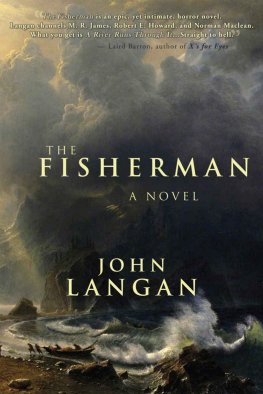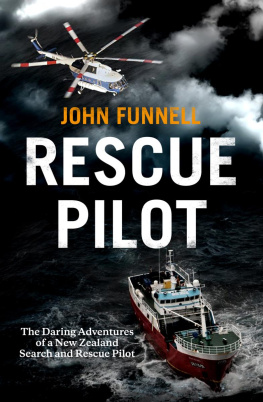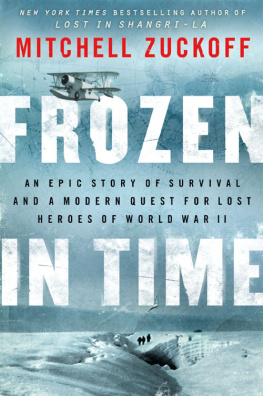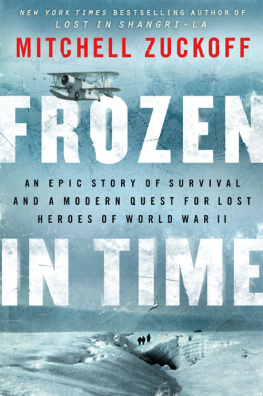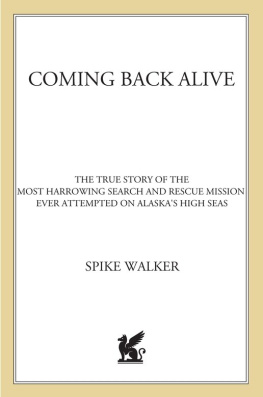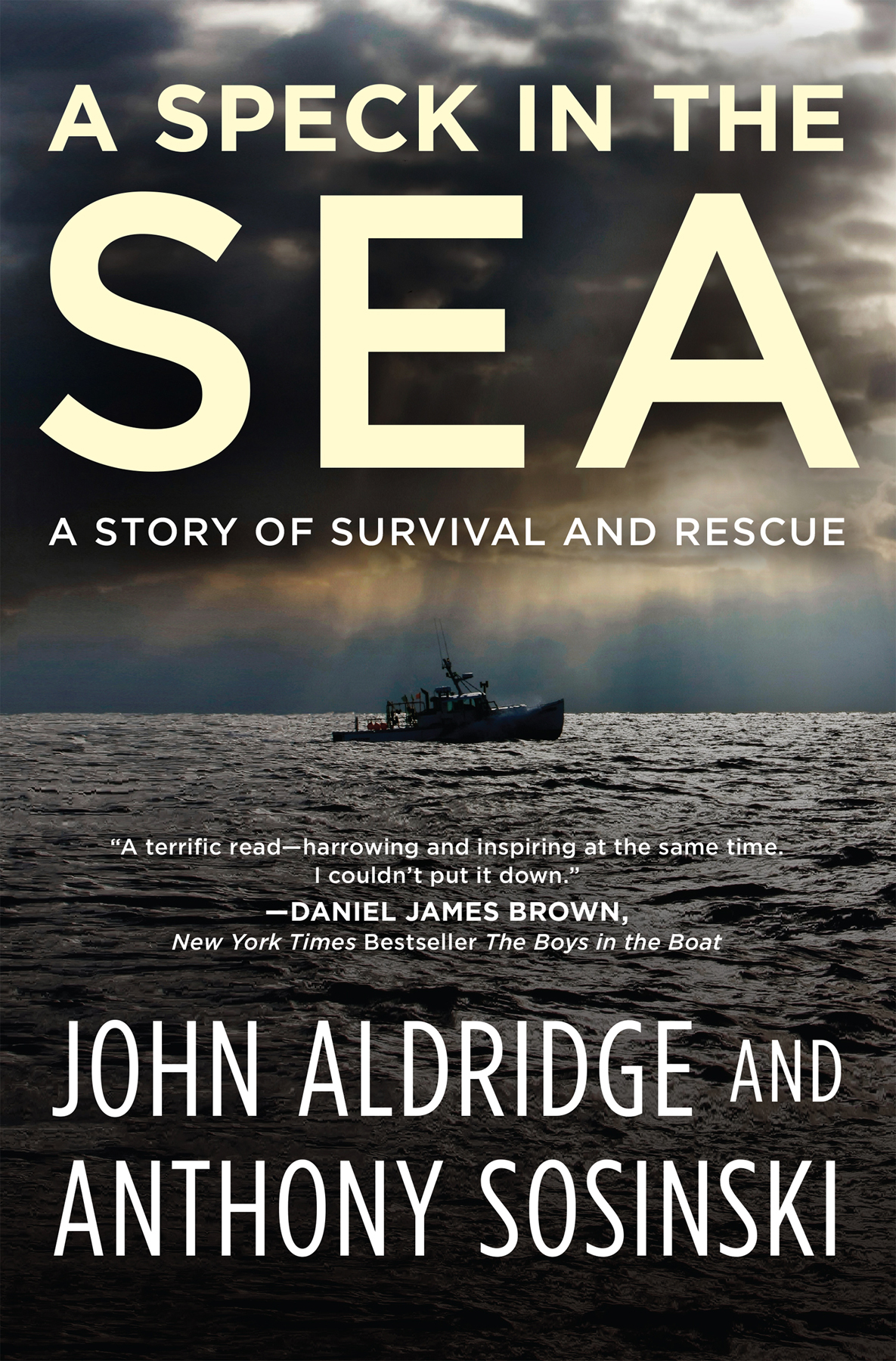Copyright 2017 John Aldridge and Anthony Sosinski
Descriptions and photos in Appendix A courtesy of the United States Coast Guard
Photos in the photo insert appear courtesy of the authors unless otherwise noted.
All rights reserved. No part of this book may be used or reproduced in any manner whatsoever without the written permission of the Publisher. For information address Weinstein Books, 1290 Avenue of the Americas, New York, NY 10104.
Book design by Timm Bryson
Set in 11.5 Warnock Pro
Library of Congress Cataloging- in- Publication Data is available for this book.
ISBN: 978-1-60286-328-6 (hardcover)
ISBN: 978-1-60286-329-3 (e-book)
Published by Weinstein Books, an imprint of Perseus Books, LLC, a subsidiary of Hachette Book Group, Inc.
www.weinsteinbooks.com
Weinstein Books are available at special discounts for bulk purchases in the U.S. by corporations, institutions and other organizations. For more information, please contact the Special Markets Department at Perseus Books, 2300 Chestnut Street, Suite 200, Philadelphia, PA 19103, call (800) 810-4145, ext. 5000, or e-mail special.markets@perseusbooks.com.
First Edition
E3-20170427-JV-PC
To the men and women of the
United States Coast Guard
and to all the people
whose lives were touched by what happened
on July 24, 2013, and who turned their focus,
their prayers, their good will, and,
in many cases, their time and effort
to a man lost at sea.
The Oceans your mother, your bitch and your lover and nobody gets to ride free
Its a roll of the dice if shell let you survive so bow down, boys, to the Queen.
The Tale of Johnny Load, by The Nancy Atlas Project
You are strong and you are resilient, remember this. You will have the strength to survive the current circumstances. Know that the Universe is ready with a huge cosmic second wind and take some alone time to tap into it when you need to. It is important that you remember how resilient you are. Also how resourceful. Take a break and come back to yourself and feel your strength again before making big decisions.
Johnny Aldridges horoscope for July 23,
the night the Anna Mary set forth,
as it appeared in the Oakdale, Long Island,
neighborhood paper.
I think all of Montauk felt that we were witnessing something extraordinary that day. You are able to see the very best in people when help is needed, and the instinct of so many is to do not only everything they can, but to push beyond that to never give up. And then to have the result be a miracle. I dont even know this fellow personally, but I dont think Ill ever forget that day.
Catherine Ecker Flanagan, Montauk native
First thanks go to Paul Tough, author of the New York Times Magazine article, A Speck in the Sea, which started the ball rolling and gave our book both its title and its impetus.
To Geoffrey Menin, our agent and lawyer, thanks for guiding us through the new-to-us world of publishing, and to Susanna Margolis, thanks for guiding us through the process of putting our story into words.
We are grateful to our friends at Weinstein Books for their support and all their help throughout this processeditorial director Amanda Murray, publishing director Georgina Levitt, project editor Cisca Schreefel, the entire production team, and, of course, Harvey Weinstein and producers Rachael Horovitz and Jason Blum.
In addition to the many Coasties who feature so prominently in the book, we are also grateful to those members of the US Coast Guard who helped in reconstructing these events three years later. We acknowledge the contributions of Jordan P. St. John, deputy chief, Office of Public Affairs; Eric Best, officer in charge of Station Montauk in 2016 for extending the full hospitality of his facility and his staff to our researcher; Martin Betts, keeper and supplier of the complete recording of Channel 16 communications for the Aldridge SAR; Kevin Wyman, officer in charge of Station New Haven in 2016, who opened his doors to our researcher; Jeremy Will, Richard Standridge, and James Nate Slack, who answered endless questions about boat search patterns; and Morgan Gallapis and Bradley Nelson, tour guides through the New Haven command center.
We are grateful also to Suzanne Pred Bass, LCSW, for her insights into PTSD and its effects, and to Bonnie Brady for her insights into the politics of fishing regulations.
Cathy Patterson is not just a sister or near-sister to us both, nor is she just a key character in the events at the heart of this book. In more than two years of operating in her famed business mode, she managed the many details involved in gathering information and photos, lining up interviewees, scheduling conferences, managing every detail of our project, and keeping everyone informed. In doing so, she made it possible for the rest of us to do the research, writing, thinking, reviewing, editing, worrying, and fishing that we needed to do. A Speck in the Sea wouldnt have happened without her.
Thanks also to all the members of both the Aldridge and Sosinski families for their help and unwavering support, and a special shout-out to Laurie Zapolski for so ably assisting Cathyand for other things as well.
From the air, the most conspicuous natural feature on the far East End of New Yorks Long Island is the nine-hundred-acre circular expanse of Montauk Harbor. On a clear, bright, sunny day, the kind of day that the East End experiences most of the year, everybodys fantasies about a seaside community come dazzlingly to life in this place. The sunlight glints off the sea more radiantly than it does over fields and towns farther west toward New York City. Seagulls wheel overhead. Cloudless skies are cerulean, sand golden. Every kind of boat in the harborfrom sailboat to cruiser, motor yacht to dinghy, fishing vessel to kayakbobs gently in its slip on the sparkling water, rising and dipping, knocking gently against the wooden dock while the breeze carries the scent of ocean salt across dunes and beaches, gardens and backyard decks.
Radiating out from the harbors circumference is the storied hamlet of Montauk itself. Downtown is mostly south and west of the harbor, its shops and businesses low slung and understated. To the east, west, and south of the harbor, clusters of residential streets snake and spiral along the flat topography and fill but do not crowd the narrow available space, which extends just some four miles from north to south shore. Many of the houses, mostly of one or two stories, are sheathed in the gray shingle that is the classic Montauk look. They are ringed around and often partially hidden by thick shrubs and tall sea grasses, by stunted-looking scrub oaks and twisted black cherry trees that remain low and out of the wind, by clumps of mint and salvia and ferns, by gardens that in season sport every color and variety of perennial and annual possible in the loamy soil, not to mention the stalks of corn and vines heavy with tomatoes that exemplify summer here.
The houses, the shops, the dunes, the broad beaches, the views of the sea from decks and terraces are hallmarks of the East End, yet all revolve in one way or another around the harbor, which is central to the life of the community and to the sense of place here. So it is perhaps ironic that there is nothing natural about Montauk Harbor at all. From the moment it was carved by glaciers in the Pleistocene Epoch until the early twentieth century, this body of water was a freshwater lake, the largest in a collection of lakes, ponds, pools, rivers, and marshes that dot Long Island. It was called the Great Lake, and at a point along its northern shoreline only a minuscule distancemaybe three-tenths of a mileseparated the freshwater lake from the open ocean of Block Island Sound.


